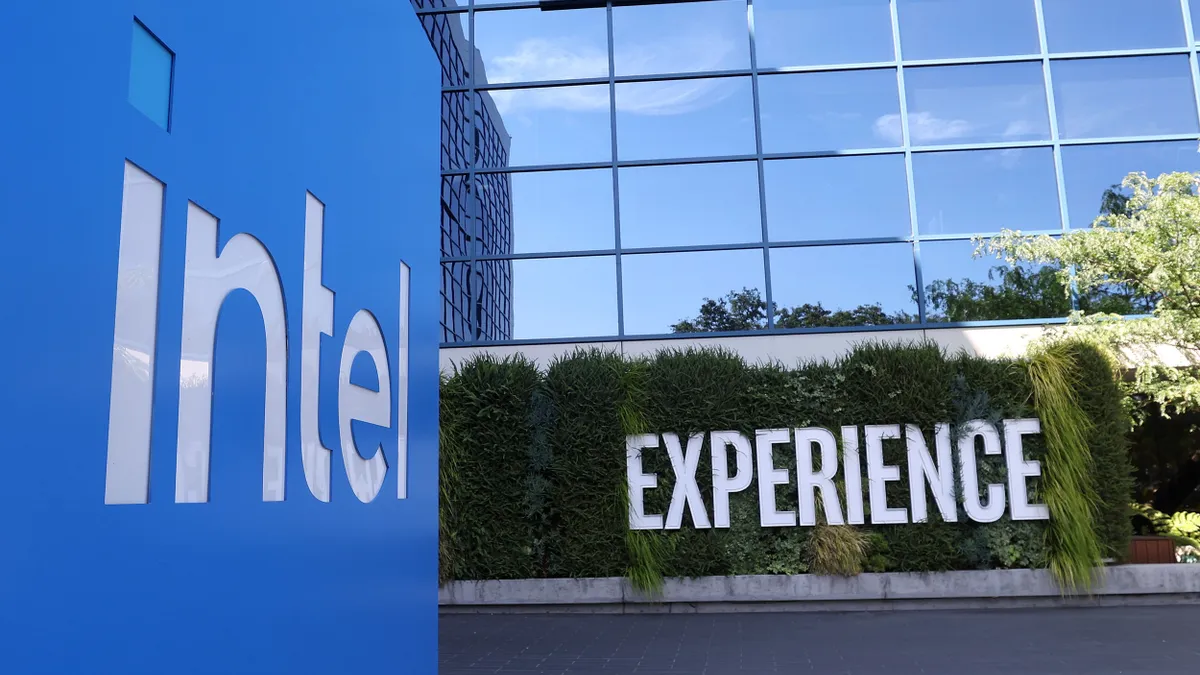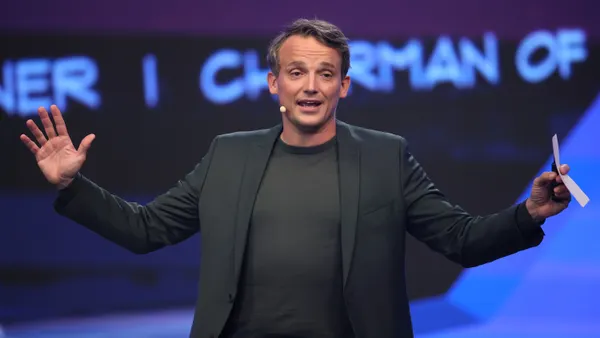Dive Brief:
- Chip manufacturer Intel appointed its CFO David Zinsner, together with Intel Products CEO Michelle Johnston Holthaus, as interim co-CEOs after the company’s top executive Patrick Gelsinger retired from the company and resigned from his roles as CEO and member of the board effective as of Dec. 1, according to a securities filing. Gelsinger also resigned from the board for Intel subsidiary Mobileye, the company said.
- Gelsinger’s resignation comes as the CEO, a 40-year veteran of the company, failed to inspire confidence in the board, which convened last week to discuss the ex-CEO’s turnaround plans for the chipmaker, according to CNBC. The Santa Clara, California-based company reported a record quarterly loss of $16.6 billion for Q3, impacted by costs related to restructuring efforts spearheaded by Gelsinger.
- Zinsner, 56, will continue to serve as the company’s finance chief, Intel said. Holthaus, 51, has also been appointed to the role of CEO for Intel Products, and will step down from her position as EVP and general manager for Intel’s client computing group.
Dive Insight:
The ex-CEO will depart with a severance agreement that includes a payment equal to 18 months of his current base salary of $1.2 million and 1.5 times his target bonus of 275% of his base salary, according to the filing with the Securities and Exchange Commission.
The company’s board has created a CEO search committee to identify potential candidates for Gelsinger’s successor, the company said in its filing. Board member Frank Yeary will oversee the CEO search process, the company said.
In the interim, Zinsner and Holthaus as joint top executives are faced with the challenge of reviving key aspects of the company at a time when Intel is still in the midst of a massive turnaround plan that includes wide-sweeping layoffs and a target of $10 billion in cost reductions.
The two highlighted a focus on Intel’s foundry business, which inked a partnership with Amazon Web Services in August following a disappointing Q2 for the chipmaker, in an attempt to bolster new growth.
“We are grateful for Pat’s commitment to Intel over these many years as well as his leadership,” Zinsner and Holthaus said in a joint statement included in a press release announcing their interim appointments. “We will redouble our commitment to Intel Products and meeting customer needs. With our product and process leadership progressing, we will be focused on driving returns on foundry investments.”
Zinsner has served as CFO for the chipmaker since January 2022, according to the company’s latest proxy filing. He joined Intel from Micron Technology, where he also served as finance chief, and his previous experience also includes a term as CFO for Analog Devices, the company said in its press release.
Holthaus, meanwhile, is a 30-year alum of Intel — her previous roles include serving as chief revenue officer and general manager of its Sales and Marketing Group, as well as lead of global CCG sales, Intel said.
As the two leaders step in as interim co-CEOs, Gelsinger’s departure raises questions about Intel’s future strategy regarding its ongoing turnaround plans. Joining Intel in 1979, the ex-CEO held a variety of roles during his time at the company, including serving as its first chief technology officer in 2000, and took the role of CEO in 2021 with the goal of revitalizing its growth.
However, Gelsinger’s time as CEO has been marked with challenges, especially as the company scrambles to keep pace with competitors in the GenAI space, reporting both slumping revenues and widening losses for its past few quarters.
After reporting a $1.6 billion loss for its Q2, Intel embarked on a restructuring plan that included a cost reduction strategy aimed at shaving down its cost of sales and capital expenditures, as well as mass layoffs across the organization.
However, for the following quarter, losses ballooned to the record $16.6 billion, the largest quarterly loss in the company’s history — driven by costs associated with its restructuring plan and depreciation of manufacturing assets purchased during the pandemic, Gelsinger told The Wall Street Journal in an interview at the time.
For its Q3 ended Sept. 28, the company reported impairment charges of nearly $16 billion and severance charges of nearly $3 billion. In a separate SEC filing at the time, Intel also announced its layoff target had risen to 16,500 employees, compared to its original 15,000 target.
Intel declined to comment beyond the details included in its press release.















